Welcome to the complete guide of Montessori toys for babies and toddlers.
I’m using my own experience with toys and have done the research to find some of the best available toys that fit the Montessori approach to raising a toddler.
I’ve categorized the toys into 6-month groupings, but please understand that your child might be ready for these toys before or after the category it is placed in.
Every child is different and observation plays a big role in knowing which Montessori toys your child is ready for.
Best Montessori Toys For:
*Updated for 2025
What Makes A Toy a Montessori Toy?
Before we get into the toys, I want to help define what makes a toy a Montessori toy.
A Montessori toy is one that promotes engagement and serves a learning purpose, rather than just entertainment and/or a distraction (this is why Montessori toys aren’t battery operated).
Montessori toys are often referred to as activities, as a toy is defined as something you play with while an activity is defined as something you do.
This doesn’t mean Montessori toys are less fun for the child. In fact, I think the opposite is true. Montessori toys or activities can keep kids engaged and having fun for hours at a time.
Montessori style toys range from fine motor skill activities like stackers and threading toys to musical instruments and artwork to practical life activities like button and zipper boards or washing baby dolls.
A character of Montessori toys for babies and toddlers is that they also only focus on one skill or concept at a time.
Are Montessori Toys Always Wooden?
No, despite the myth, Montessori toys don’t have to be wooden!
Maria Montessori suggested that toys be made from attractive natural materials, which is why wood is often the material of choice for toys in a Montessori playroom.
The important feature of Montessori toys isn’t what they are made from, but more the characteristics talked about above that define a Montessori toy.
Wooden toys are great because they are beautiful, timeless, feel great to handle, carry a bit of weight, and hold their value well.
The downside to wooden toys is that they are more expensive than most other materials.
Toys of natural materials are preferred, but a toy doesn’t have to be wooden to be considered a Montessori toy.
0+ Month (Infant) Toys
While infants and babies won’t be using as many toys as a toddler, it is still essential to have them playing with toys for proper development. Below I will list some great Montessori inspired toys for infants.
Black and White Pictured Books
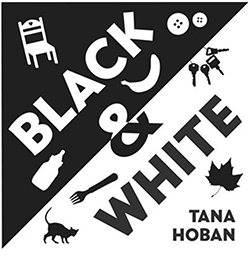
Reading to a child at any age will be beneficial for their development (yup even newborns)! These black and white pictured books are best for infants as they can see black, white and grey when they are born. The high contrast of black and white images are easier for a baby to see and are said to help increase their concentration skills and attention span, and help their optic nerve to grow.
Montessori Baby Play Gym or Mobile
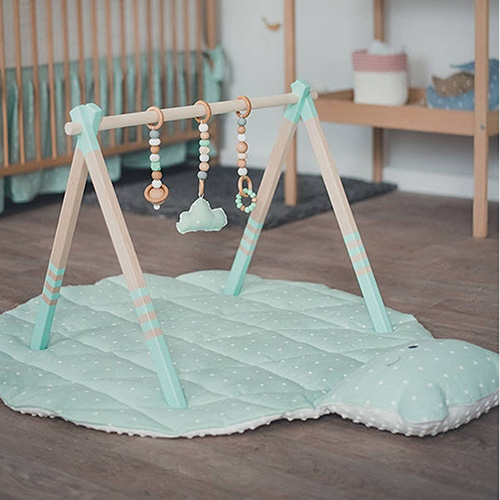
Babies are attracted to contrasting and bold colors, and baby mobiles (or play gyms) are great for their visual development. There are mixed opinions on baby mobiles above a crib, but all experts agree that baby play gyms with mobiles not in a crib setting are great for babies. Having your baby reach, grasp, turn, and kick for hanging items will help with hand-eye coordination and fine and gross motor skills. In a Montessori setting you will usually see a simple baby play gym, often made from wood (but not necessary).
Wooden Rattle
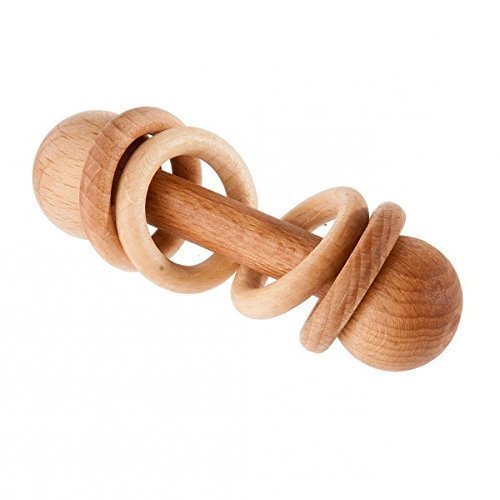
Rattles are more than just entertainment for the baby, as they can teach babies visually tracking (with the parent moving it in front of the baby’s face), and help with fine motor skills and grasp reflex. Infant rattles can be made of all different materials but, in my opinion, wooden rattles are the best choice. The extra weight from the wood compared to plastic is a benefit for babies.
Soft Balls
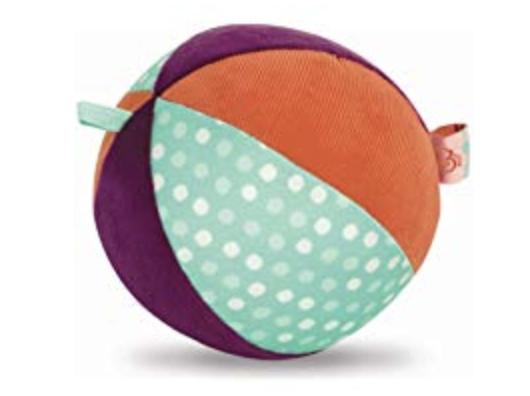
Soft balls can be a great sensory item for babies as they grasp and squeeze them in their little hands. This will help develop their hand-eye coordination, tracking, and transferring the ball from one hand to the other. Balls are also a great way to encourage movement in tummy time, as the baby will push and roll the ball and try and reach for it.
6+ Month Montessori Toys
In the 6+ month stage babies will really start to become alert and curious about the world around them. Below are some of my favorite Montessori toys for this age.
Textured Balls
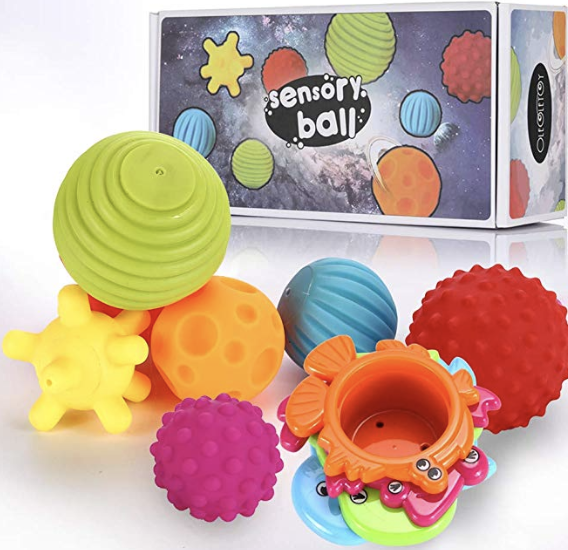
We picked up a package of textured balls four our daughter right around the 8-month mark and they’ve been getting plenty of uses since. The different textures on the ball are great for sensory play at a young age, and later on, they can be used for games (playing catch, soccer and hockey are our favorites).
Object Permanence Box
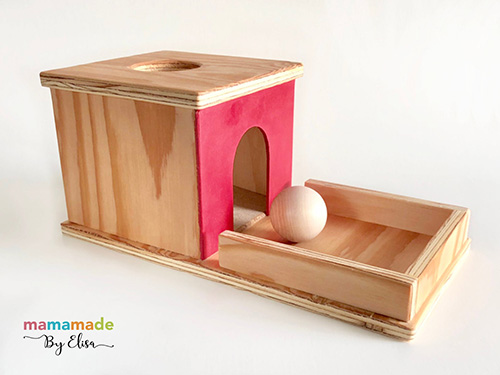
The Object Permanence box is a staple baby toy in the Montessori community and you will have likely seen one of these if you’ve been researching Montessori toys. This was a favorite for our babies and although it hasn’t been on the shelf much as they’ve gotten older, it’s definitely recommended for little ones.
Baby-Safe Mirror

This could be introduced earlier than 6 months, but a baby-safe mirror is great to have in any playroom. A mirror can make tummy time last longer, as their reflection may catch their attention and keep them busy. It can also be used for gross motor development by getting your baby to crawl, sit up, stand, etc. And lastly, it teaches your baby a sense of self.
Musical Instruments
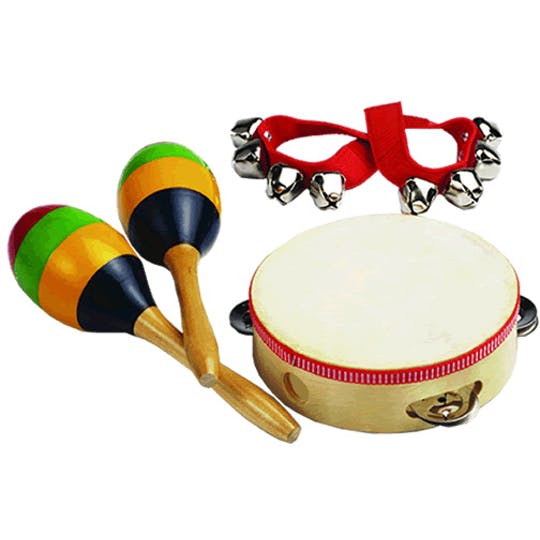
It’s never too early to introduce musical instruments, and babies love noisemakers like maracas and tambourines. Besides building fine and gross motor skills by picking up and shaking the musical instruments, studies have shown that musical instruments create more pathways in the brain and speed up brain development.
12+ Month Montessori Toys
The 1-year-old+ stage is usually when babies start to become a lot more active (often walking in this 12-18 month age range). I’ve included a few toys that work on both fine and gross motor development and coordination. I also made a separate Best Montessori Toys For 1 Year Olds Guide.
Vertical Stackers
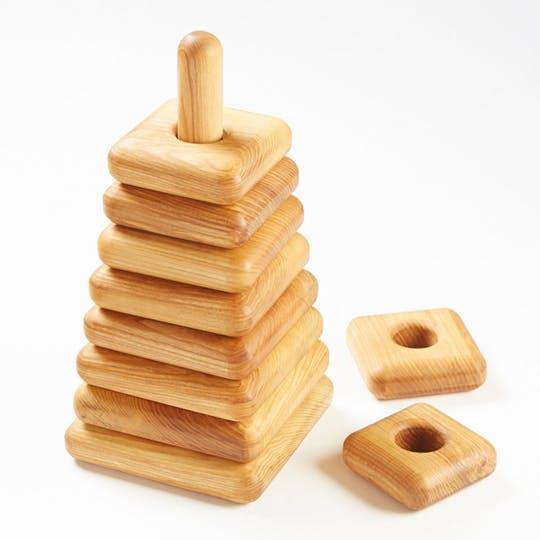
This one has been a favorite of our daughters since about 9 or 10 months old, but she really started mastering vertical stackers after her first birthday. The vertical stacker toys come in all different shapes and sizes, allowing you to rotate multiple different stackers in your toy rotation to keep your little one engaged. The stacker pictured above is a large, heavy wooden stacker that we purchased for our daughter at 17 months. It is about 10x the size of the first wooden stacker she started out with!
Pop Up Toy

This is a fun one that can stay on your shelf for many months. As starters, a baby can simply place the little wooden “people” in the holes. Later they can learn that if they push them all the way down and let go they will pop out of the hole. And then lastly they can learn to sort the little wooden guys by color too! This is a great toy for fine motor skill development, and can definitely be introduced much earlier than 12 months (The Montessori Notebook has it on her 6-9 month shelf).
Wooden Puzzles
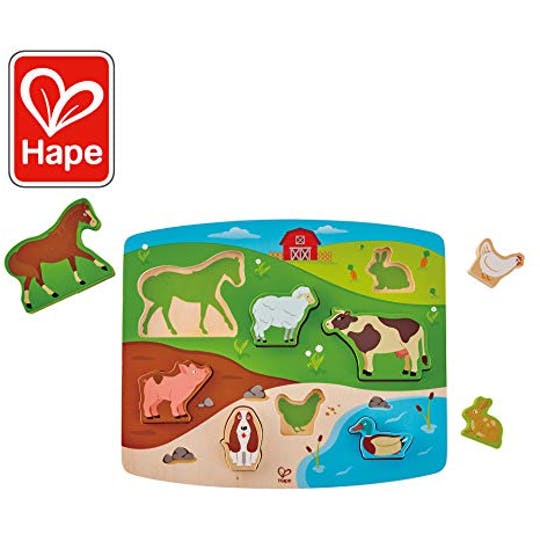
Puzzles are an amazing budget-friendly activity that is great for toddlers. Simple wooden puzzles are excellent for language development (for example naming each animal as they pick them up), fine motor skills and hand-eye coordination, problem-solving (having to rotate the pieces of the puzzle), shape recognition and memory.
We started with a simple 3 shape wooden Montessori puzzle, and have now moved onto a little bit more “advanced” puzzles similar to the one pictured above. Our daughter absolutely loves doing puzzles right now and it makes a great toy to rotate on the shelf.
Life Like Baby Dolls
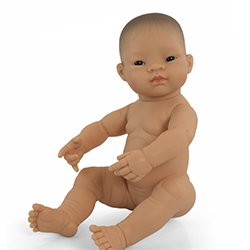
A baby doll toy is excellent for toddlers with developing social-emotional, language and self-help skills. It is also a great way for little ones to prepare for a sibling. Plenty of practical life skills can be taught and/or practiced with a baby doll, including putting on and taking off clothing, feeding, and bathing.
Pull Toy
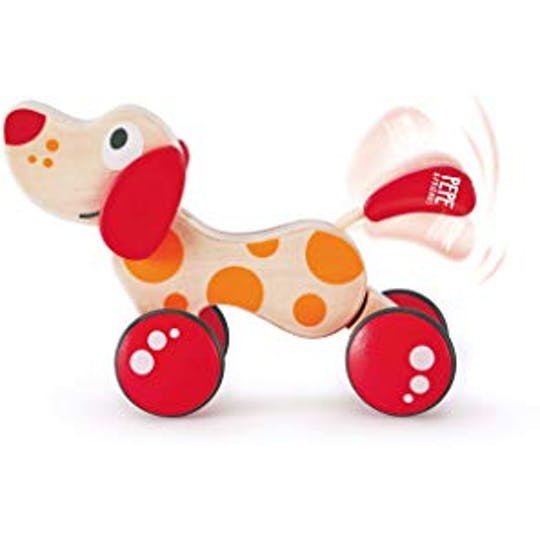
A pull toy is a great activity for toddlers as they start to walk. Not only will they enjoy pulling a toy around on the ground, but it also will improve their coordination and balance as they master pulling something as they walk. This wooden dog pull toy pictured above is great for any family who has dogs, as your little one will enjoy reenacting walking the dog.
Vocabulary Cards
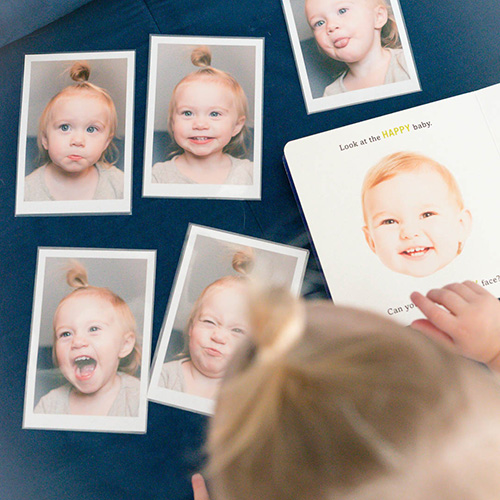
Vocabulary cards are a great activity for little ones, and the possibilities are endless. You can purchase vocabulary cards from various Montessori Etsy shops and websites, but it is also very easy to make them yourself if you have a printer. We’ve found that about 6-8 cards in a group make for a great Montessori shelf activity. Pictured above is our “faces” cards that pair with the book Making Faces (happy, angry, sad, silly, and surprised). We’ve created a variety of different vocabulary cards including animals and seasonal items and our daughter loves learning through the cards
Practical Life Activities

I won’t include a list of practical life activities in this Montessori Toy guide, as I will be creating a complete Practical Life Activity guide with examples. But this age is a great time to start introducing practical life activities. We started a lot of practical life activities around the 15-month mark, but of course, every child is different.
18+ Month Toddler Toys
At this age, you’ve got a busy toddler on your hands, and toys are going to be needed to keep their busy bodies and minds engaged :). I’ve included some more gross motor development toys, as this is a great age for exploring movement further.
Montessori Knobbed Cylinders

These are another popular activity in Montessori classrooms. We picked up our Knobbed Cylinder activity on Etsy and includes four different types so that you can progress through the various stages combining the pieces to make it more challenging. This is a great activity for fine motor skill development and problem-solving.
Hammer Style Toy
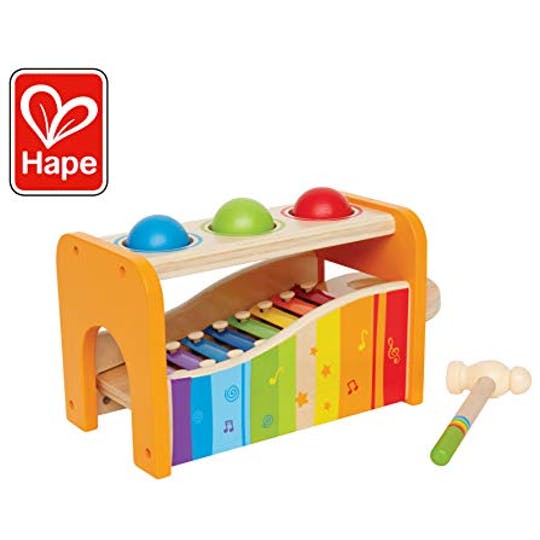
I’ve found hammer-style toys to be great for our daughter when she is in a hitting stage. We’ve used it to re-direct our daughter from swinging other toys that weren’t meant to be swung by saying something like “I can see you want to swing your toys, would you like to play with your hammer?” Having some type of hammer activity is a healthy outlet for them to get some of that swinging/hitting energy out. This particular toy by Hape also includes a xylophone, making it a great 2-in-1 toy.
Figurines
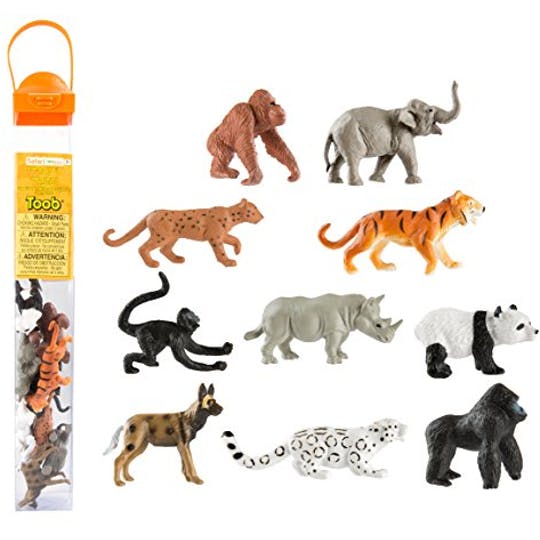
Real-life figurines are exceptional for language development in toddlers. We have a variety of different sets of figurines from Safari Ltd including wild animals, pets, things that fly in the air, and more. You can start by showing each figurine and saying what it is – for example, “this is a gorilla”. Later you can move into asking “where is the gorilla?” and matching the figurines to identical sets or printed cards. The possibilities are endless with these figurines and they make for a great learning toy.
Push Toy
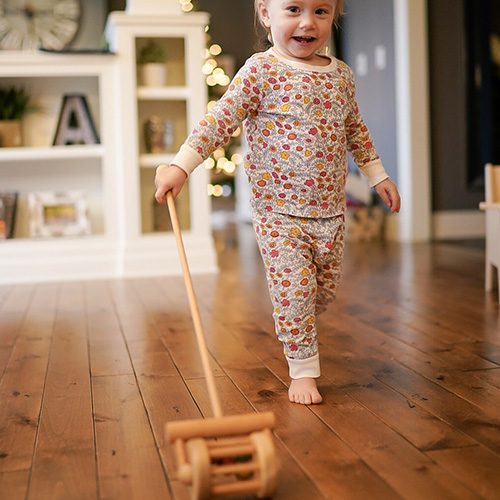
As your toddler starts to walk, a push toy is great to encourage more walking and provide them an entertaining activity to do at the same time. Our daughter has been walking for months now, but still loves pushing around her wooden push toy that makes a little bit of noise as she pushes. This is a great toy for gross motor development.
Outdoor Garden Tool Set
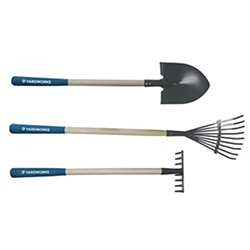
If you do any yard work outside, your toddler will most likely want to join in on the action. This is a great way to get some gross motor development work and also some practical life activities (learning how to rake or shovel dirt).
I had bought the garden tool kit set pictured above for our daughter this past fall when she was showing interest in helping me rake the leaves. At 17 months old she was able to attempt to rake the leaves and seemed to have fun doing so. Next spring I think we will get some use out of the shovel around the gardens!
Pikler Triangle or Climbing Arch
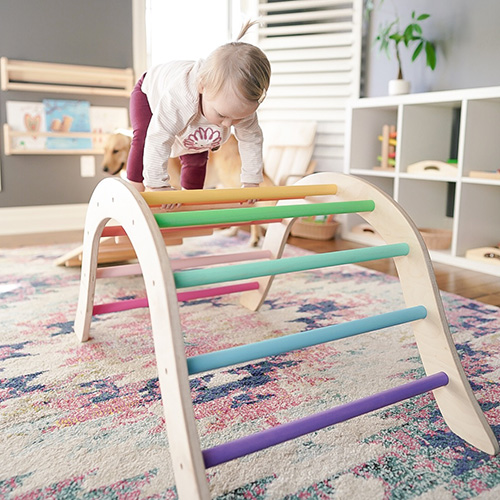
Any type of climbing equipment is an excellent idea for toddlers, and these wooden Pikler or Climbing Arches that are popular in the Montessori community are a fabulous choice. The will allow your toddler to explore movement and develop their gross motor skills – and, as a bonus, they make a beautiful addition to a playroom.
I picked up our Pikler, Arch and Ramp set from Wiwiurka – a marvelous wooden toy company that is popular within the Montessori community.